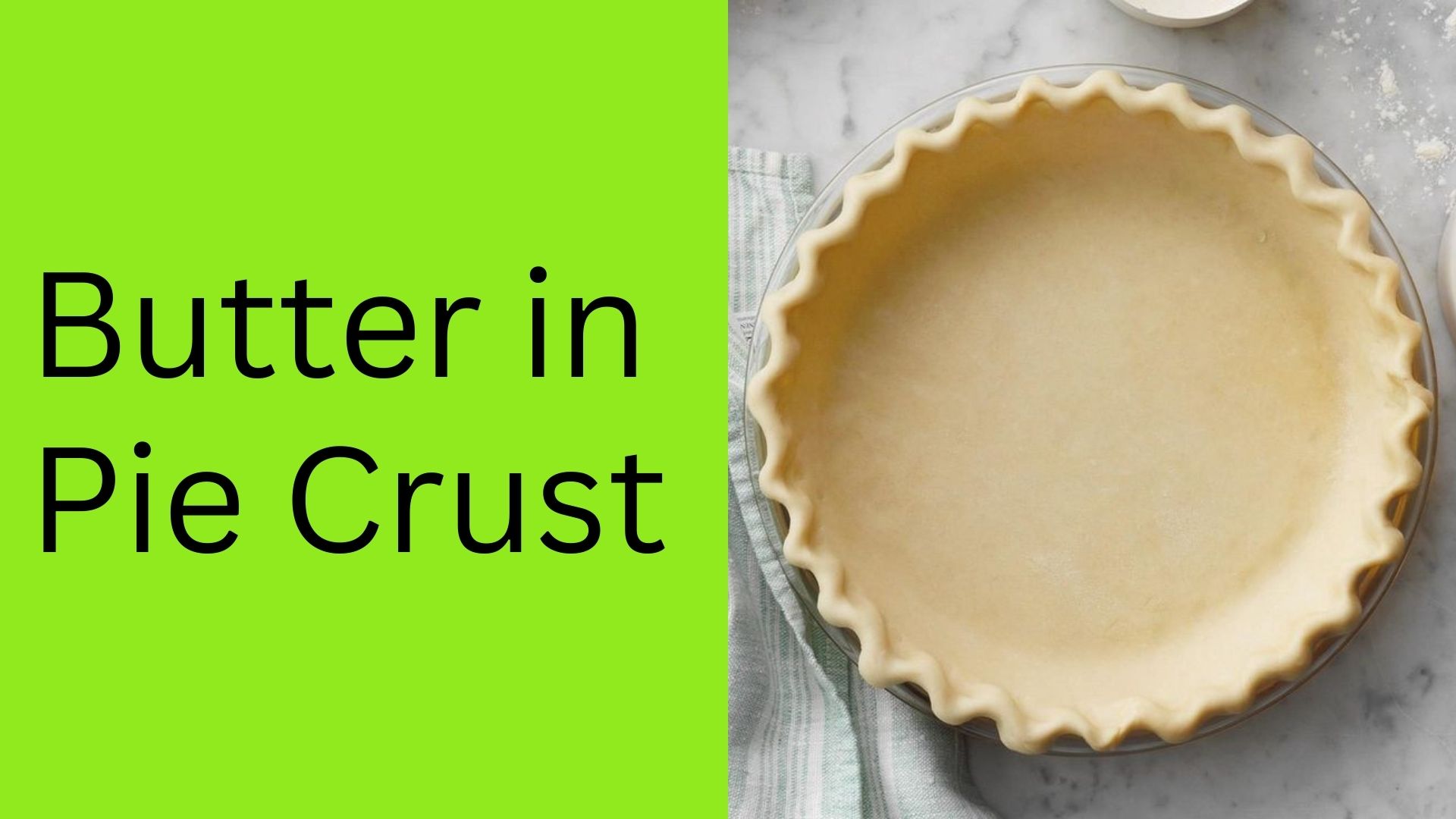Butter is a fundamental ingredient in pie crusts, contributing to their flakiness and rich flavor. However, dietary preferences and health considerations may lead to the search for butter alternatives. Discovering these substitutes opens up the possibility of enjoying delicious and satisfying pies without compromising on taste or texture.
Purpose of Butter in Pie Crust:
- Flakiness: Butter’s solid state in cold dough creates layers, resulting in a flaky and tender crust.
- Richness: Butter’s fat content adds a luxurious and buttery taste to the crust.
- Binding: It helps hold the crust ingredients together, ensuring structural integrity.
- Golden Color: Butter contributes to the appealing golden-brown color of baked pie crusts.
- Flavor Enhancement: The natural flavor of butter complements both sweet and savory fillings.
Why Replace Butter in Pie Crust:
- Dairy-Free Lifestyle: Those avoiding dairy seek alternatives that cater to their dietary needs.
- Vegan Diet: Vegan substitutes are necessary to align with plant-based eating choices.
- Healthier Options: Reducing saturated fats or cholesterol intake may be a priority for some.
- Nut Allergies: Nut-based substitutes are suitable for individuals with nut allergies.
- Experimentation: Exploring alternatives adds new flavors and textures to pie crusts.
Substitute: Coconut Oil
Details: Coconut oil is a versatile and dairy-free option that offers a mild coconut aroma.
It contributes to a flaky texture and a subtle tropical flavor.
| Nutrient | Amount per 1 tbsp |
|---|---|
| Calories | 120 |
| Total Fats | 14g |
| Carbohydrates | 0g |
| Proteins | 0g |
How to Make: Use solidified coconut oil and cut it into the flour mixture until crumbly before adding water.
Substitute: Shortening
Details: Shortening is a classic substitute known for creating tender and flaky pie crusts.
It has a neutral flavor, making it suitable for both sweet and savory pies.
| Nutrient | Amount per 1 tbsp |
|---|---|
| Calories | 110 |
| Total Fats | 12g |
| Carbohydrates | 0g |
| Proteins | 0g |
How to Make: Incorporate shortening into the flour until it forms coarse crumbs, then add water gradually.
Substitute: Olive Oil
Details: Olive oil is a heart-healthy option that imparts a subtle fruity note to crusts.
It creates a tender crust with a distinct flavor profile.
| Nutrient | Amount per 1 tbsp |
|---|---|
| Calories | 119 |
| Total Fats | 14g |
| Carbohydrates | 0g |
| Proteins | 0g |
How to Make: Mix olive oil with flour until it forms a crumbly texture, then add cold water as needed.
Substitute: Nut Butter
Details: Nut butters, such as almond or cashew, add richness and nutty flavors to pie crusts.
They offer a unique taste and potential added nutritional benefits.
| Nutrient | Amount per 1 tbsp |
|---|---|
| Calories | 98-104 |
| Total Fats | 8-9g |
| Carbohydrates | 3-4g |
| Proteins | 3-4g |
How to Make: Combine nut butter with flour to achieve a crumbly texture, then add water gradually.
Substitute: Greek Yogurt
Details: Greek yogurt is a protein-rich option that contributes to a tender and flavorful crust.
It offers a slight tanginess and moist texture.
| Nutrient | Amount per 1/4 cup |
|---|---|
| Calories | 60 |
| Total Fats | 3g |
| Carbohydrates | 4g |
| Proteins | 4g |
How to Make: Mix Greek yogurt with flour until it forms a crumbly texture, then add water as needed.
Nutritional Facts Summary Table:
| Substitute | Calories | Total Fats | Carbohydrates | Proteins | Source | Works Best In |
|---|---|---|---|---|---|---|
| Coconut Oil | 120 | 14g | 0g | 0g | Coconut | Flaky and tropical-flavored pies |
| Shortening | 110 | 12g | 0g | 0g | Hydrogenated oils | Tender and versatile crusts |
| Olive Oil | 119 | 14g | 0g | 0g | Olive fruit | Crusts with a distinct fruity flavor |
| Nut Butter | 98-104 | 8-9g | 3-4g | 3-4g | Nuts | Nutty and rich-flavored crusts |
| Greek Yogurt | 60 | 3g | 4g | 4g | Dairy | Protein-rich and moist crusts |
FAQs:
Q: Will using coconut oil make my crust taste like coconut?
A: Coconut oil imparts a mild coconut aroma, but it won’t overwhelm the overall flavor of the crust.
Q: Can I use nut butter in both sweet and savory pies?
A: Absolutely, nut butters add a unique nutty richness that can complement a variety of fillings.
Q: Will olive oil alter the color of my crust?
A: Yes, olive oil can contribute a slightly different color to the crust, but it’s generally subtle.
Q: Is Greek yogurt suitable for vegan diets?
A: No, Greek yogurt is a dairy product and not suitable for vegan diets.
Conclusion:
Substituting butter in pie crust doesn’t mean sacrificing the quality of your baked creations. Each alternative—coconut oil for a tropical touch, shortening for traditional tenderness, olive oil for a fruity twist, nut butter for nutty richness, and Greek yogurt for protein-packed moistness—adds its own dimension to your pies while catering to various dietary preferences. With these substitutes, you can continue to enjoy delightful pies that are tailored to your needs and preferences.




